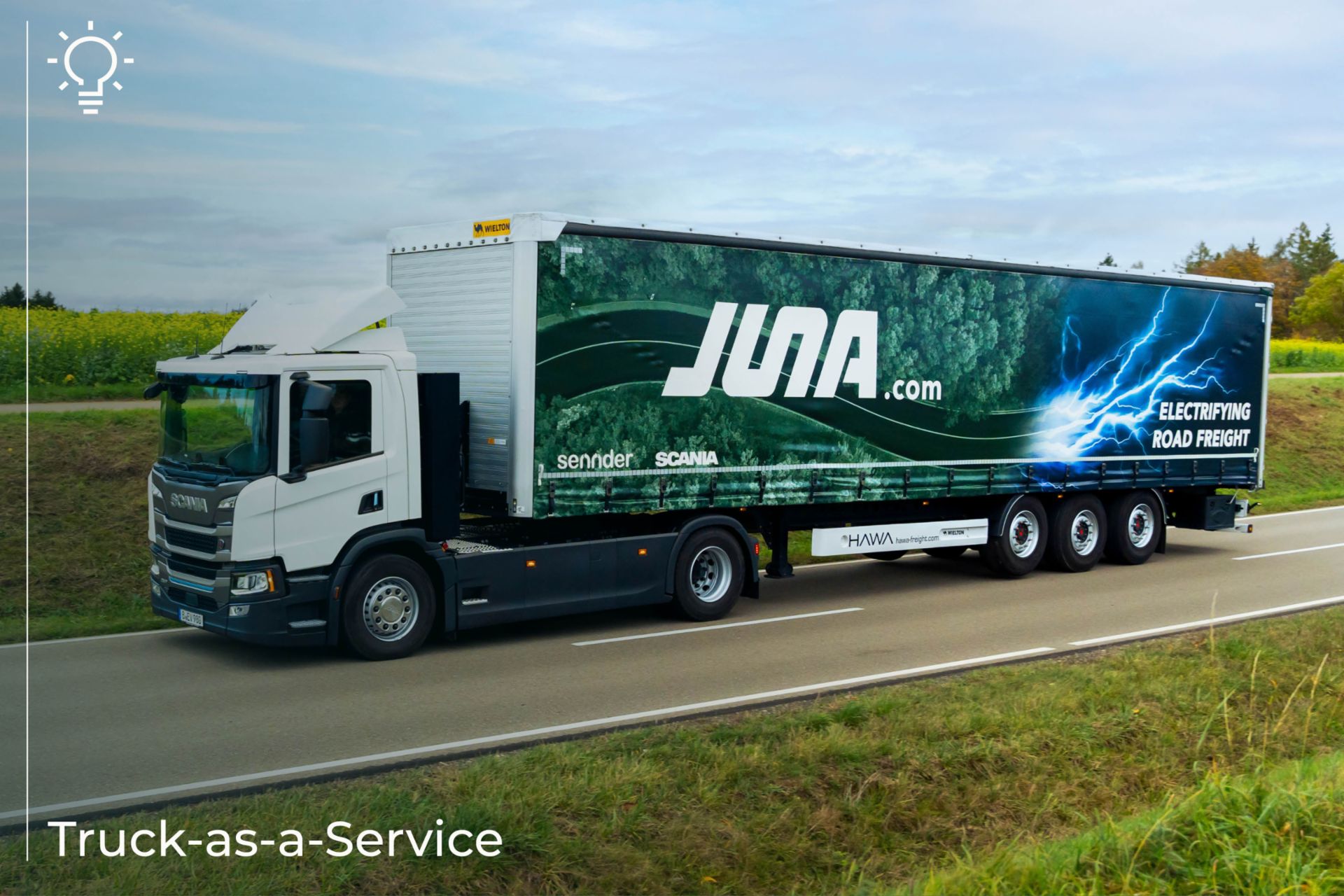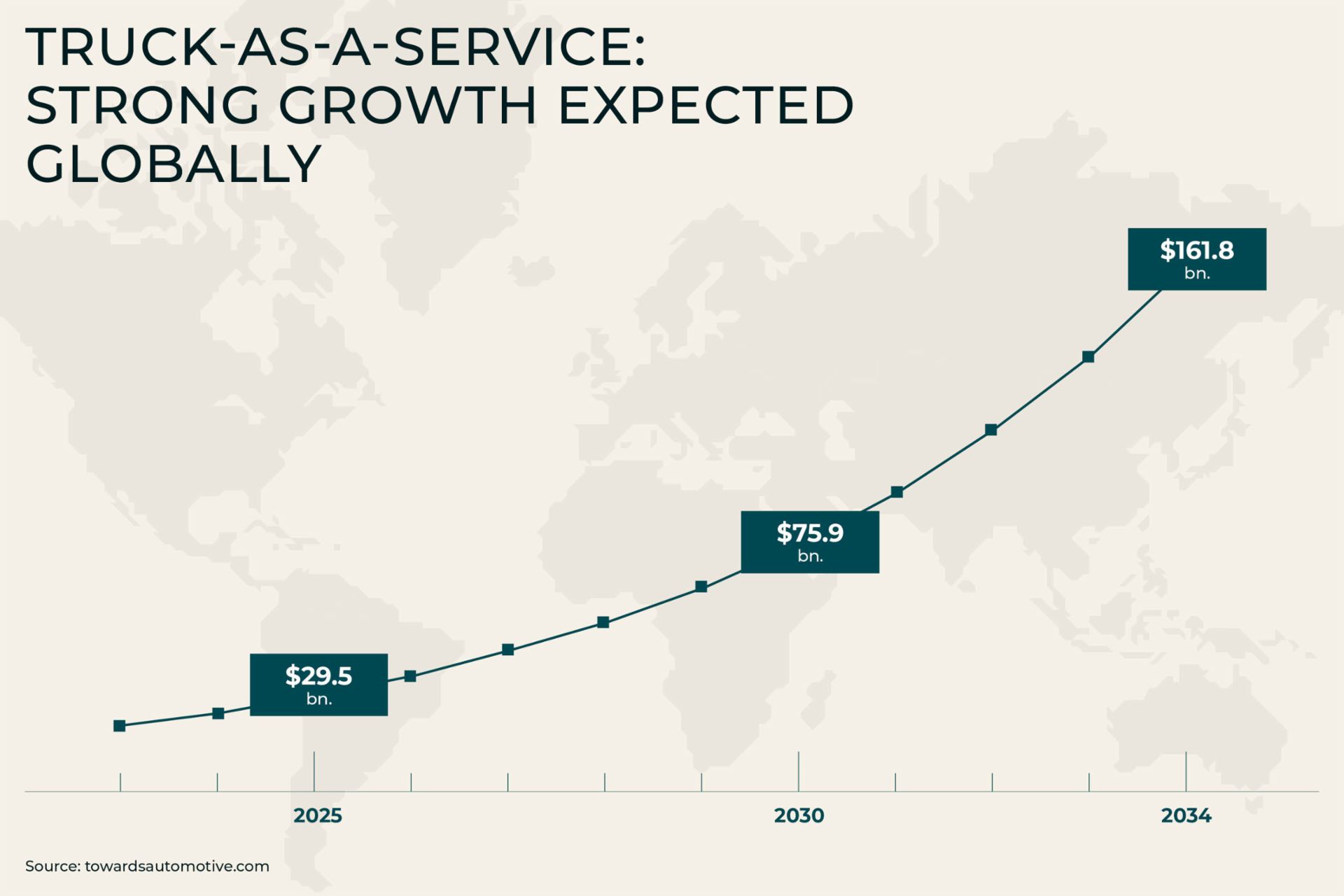The mobility landscape is rapidly evolving. This change extends beyond advancements in vehicle technology, encompassing innovative business models like Truck-as-a-Service (TaaS).
TaaS provides an alternative subscription-based model that is gaining momentum amid the shift to e-mobility. In this approach, logistics companies pay only for the truck when they use it, for example, with a fixed price per kilometer.
Factors like higher up-front purchase costs for e-trucks, the need for investment in charging infrastructure, and the risk of declining residual values all prompt a reassessment of the traditional ownership model.
TaaS enables flexibility and financial savings for fleets. The cost point is particularly salient, given that the initial vehicle price for a zero-emission truck is two-to-three times higher than for a diesel equivalent. The cost savings of TaaS over traditional ownership increase the more a vehicle is used.
JUNA, a joint venture between Scania and sennder, a leading digital road freight forwarder in Europe, responds to growing appetite for TaaS with a holistic package that includes the vehicle, repair, maintenance, insurance as well as digital and electric services.
The solution also provides commercial predictability, especially during times of fluctuating demand, by ensuring stable costs, reliable service levels, and the flexibility to scale operations.
Founded in 2023, JUNA first launched its services in Germany. In 2025, JUNA will expand to Belgium, the Netherlands and Italy, scaling its fleet to hundreds of e-trucks. The venture’s next goal: to deploy 5,000 electric trucks by the end of the decade.
Truck-as-a-Service vs Traditional Ownership
-
TaaS: Predictable costs based on an agreed rate
Traditional ownership: Costs can fluctuate due to maintenance, repairs, and unforeseen vehicle issues
-
TaaS: Flexible vehicle access based on current needs
Traditional ownership: Customer is committed to fixed models and fleet size
-
TaaS: Maintenance and repairs included
Traditional ownership: Full responsibility for vehicle maintenance, repair costs, and downtime
-
TaaS: The provider bears the risk of asset value decline
Traditional ownership: Customer bears the risk of depreciation
-
TaaS: No need for large capital investment in fleet; payments are operational expenses
Traditional ownership: Requires significant capital investment for vehicles and infrastructure




